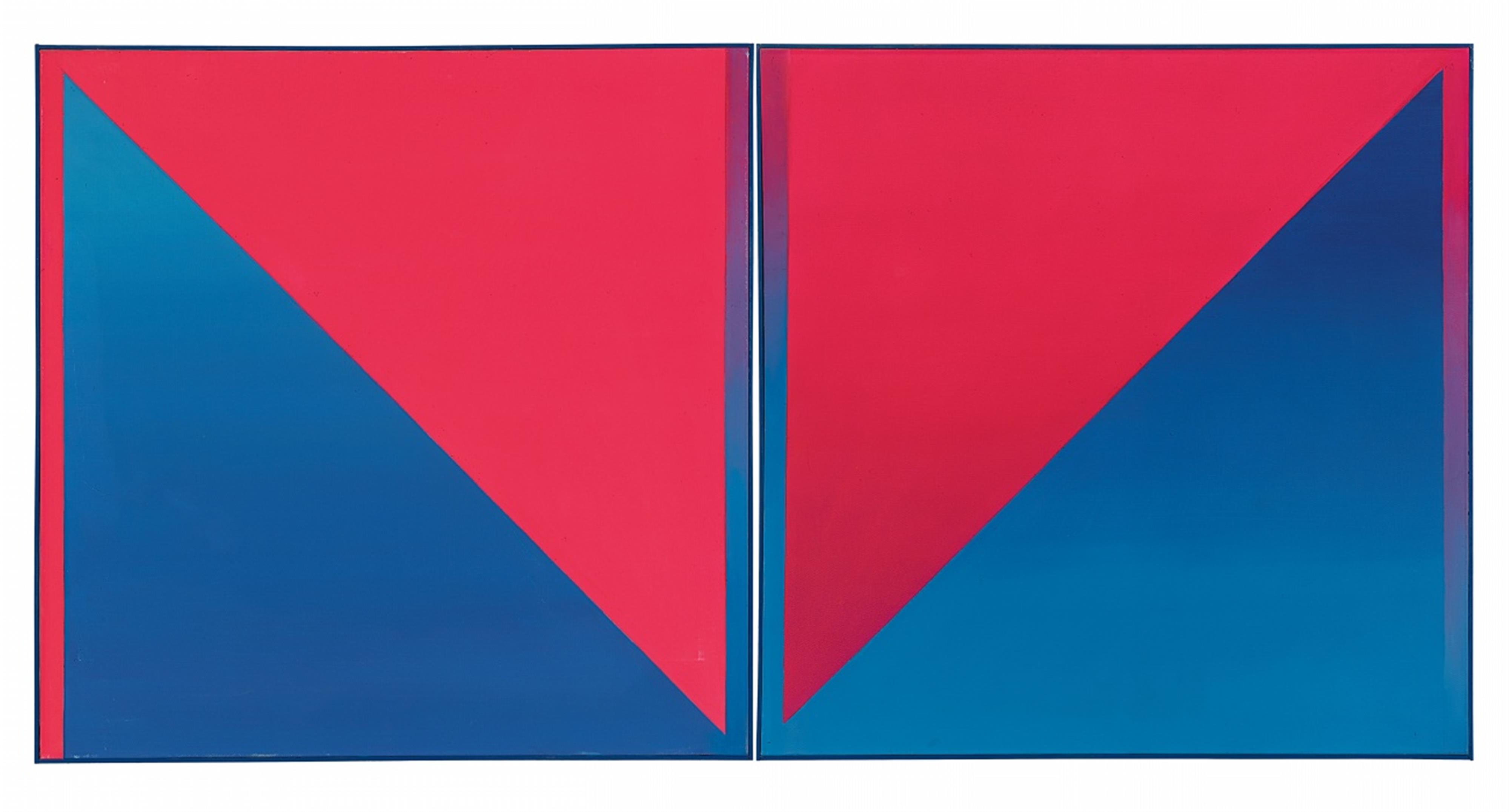Jef Verheyen
Untitled
1970s
2-part work: each acrylic on canvas. Each 94.5 x 94.5 cm. Each framed in painted artist's frame. Each signed and inscribed 'Jef Verheyen Provence 43 version II links' and 'rechts' resp. on verso. The work to the left titled 'liturgie colorée agression spatiale' and inscribed 'Peintre Flamant'. - Minor traces of age.
His encounter with Piero Manzoni and Lucio Fontana in Milan at the end of the 1950s opens Jef Verheyen's eyes to the new, after first going public with black, monochrome pictures in 1956. White pictures are thenceforth the result, but he also develops a strong impulse for materiality and monochrome painting. Like Otto Piene, Verheyen experiments with soot as a pigment and together with Fontana, produces perforated canvases and synthetic colours. The contact to Yves Klein, Günther Uecker, Otto Piene and Heinz Mack intensifies his theoretical and artistic affiliation to the international ZERO movement. With his newly won friends, Verheyen expresses himself in group events in a very differentiated way with painting and objects. He is anxious not to be constrained by standardised formal norms but to create something new and innovative. With a particularly fine monochrome light and colour-painting, Verheyen brings a fresh interplay of artistic ideas and processes into the movement. His first monochrome experiments, termed by him as “Essenz” (essence), prove him to be a representative of a certain 'hardcore' modernism in the struggle for an aesthetic compromise. For this, he studies the effect of variously coloured pigments, underlaying a white colour, for example, with additional layers of fluorescent colours to produce iridescent light effects. The colour nevertheless appears pure and is described in the literature as dematerialised. However it is still - and probably only - a thinly applied pigment, bound in various binding agents, respective pigment additives with light-reflecting or absorbing colour additives. For the even distribution of colour, Verheyen initially uses a wide brush. This is worked afterwards using an artist's nylon stocking or sponge to cover the traces of the brush and conceal the course of the colour sequences touching each other. After pure monochrome coloured canvases, Verheyen divides his picture surfaces into diagonals and like Ad Reinhardt, uses the same pigments in contrasting strokes or basic geometric forms such as circles, squares or triangles to illustrate the brilliance and light refraction in the delicate stroke of the brush. Mostly fine nuances of change are noticed, as here in the mixed blue and pink from one picture edge to the other of the two, to a diptych of combined reflection on the essence of colour. “The point of my painting is the objective visualisation of virtual areas”, says Verheyen in 1968, (as cited in Jef Verheyen, Le peintre flamant, exhib.cat. Neuss 2010, p.70).
Certificate
We would like to thank Mark de Wit, Jef Verheyen Archive, Heffen, for helpful information.

